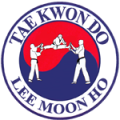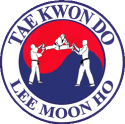[imageframe lightbox= »no » lightbox_image= » » style_type= »none » hover_type= »none » bordercolor= » » bordersize= »0px » borderradius= »0″ stylecolor= » » align= »none » link= » » linktarget= »_self » animation_type= »0″ animation_direction= »down » animation_speed= »0.1″ animation_offset= » » hide_on_mobile= »no » class= » » id= » »]
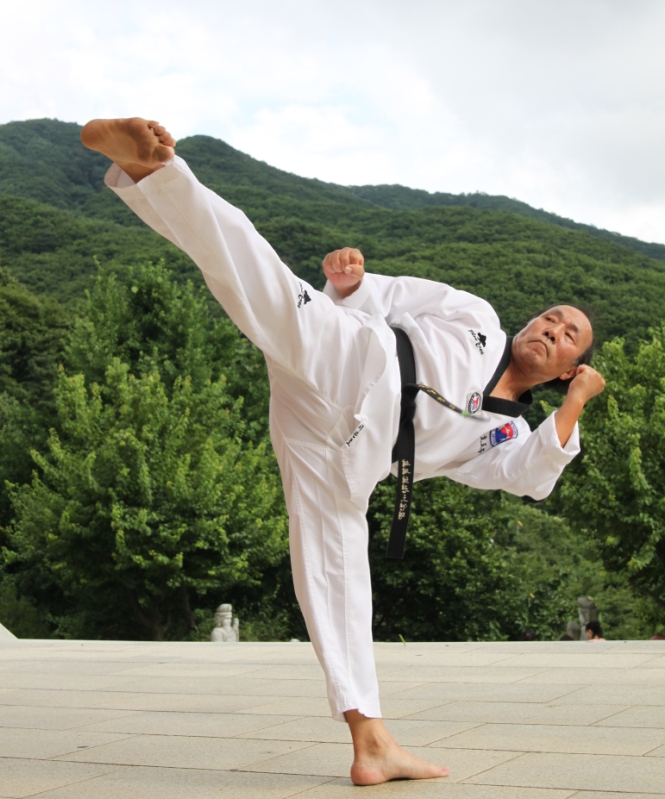
[/imageframe]
[three_fourth last= »yes » spacing= »yes » center_content= »no » hide_on_mobile= »no » background_color= » » background_image= » » background_repeat= »no-repeat » background_position= »left top » hover_type= »none » link= » » border_position= »all » border_size= »0px » border_color= » » border_style= » » padding= » » margin_top= » » margin_bottom= » » animation_type= » » animation_direction= » » animation_speed= »0.1″ animation_offset= » » class= » » id= » »][tagline_box backgroundcolor= » » shadow= »no » shadowopacity= »0.7″ border= »1px » bordercolor= » » highlightposition= »top » content_alignment= »left » link= » » linktarget= »_self » modal= » » button_size= »small » button_shape= »square » button_type= »flat » buttoncolor= » » button= » » title= » Lee Moon Ho » description= »Maître de Tae Kwon Do » margin_top= » » margin_bottom= » » animation_type= »0″ animation_direction= »down » animation_speed= »0.1″ animation_offset= » » class= » » id= » »]
9ème Dan depuis 2000 auprès de l’Ecole Chungdo-Kwan
9ème Dan WTF certifié par le Kukkiwon depuis 2006
Ex Entraîneur des Equipes de France et Corée du Sud[/tagline_box][fusion_text]
Biographie & Palmarès en individuel (hors résultats par équipe) :
[/fusion_text][/three_fourth][five_sixth last= »yes » spacing= »yes » center_content= »no » hide_on_mobile= »no » background_color= » » background_image= » » background_repeat= »no-repeat » background_position= »left top » hover_type= »none » link= » » border_position= »all » border_size= »0px » border_color= » » border_style= » » padding= » » margin_top= » » margin_bottom= » » animation_type= » » animation_direction= » » animation_speed= »0.1″ animation_offset= » » class= » » id= » »][fusion_text]
Palmarès individuel
| 16/05/1946 |
Né à Séoul – Corée du Sud |
| 03/1958 |
Débute le Tae Kwon Do au collège |
| 08/03/1964 |
Médaille d’or – Coupe Commemorative du Mouvement de l’Indépendance |
| 22/03/1964 |
Médaille d’or – Coupe de l’Excellence (catégorie poids coq) |
| 26/04/1964 |
Médaille d’or – Coupe de Corée (catégorie poids coq) |
| 09/08/1964 |
Médaille d’or – 12èmes Jeux de Séoul (catégorie poids coq) |
| 08/09/1964 |
Médaille d’or – 45èmes Jeux de Corée (catégorie poids coq) |
| 07/11/1965 |
Médaille d’or – Coupe de Corée (catégorie poids plume) |
| 04/12/1965 |
Médaille d’argent – Coupe de l’Excellence |
| 01/04/1966 |
Devient Capitaine de l’Equipe de la Sung-Kyun-Kwan University |
|
(Université aujourd’hui parrainée par le Groupe Samsung) |
| 24/04/1966 |
Médaille d’or – Coupe Inter Nations Corée-Japon (catégorie poids plume) |
| 24/07/1966 |
Médaille d’or – Championnats Universitaires de Corée (catégorie poids plume) |
| 04/09/1966 |
Médaille d’or – 14èmes Jeux de Séoul (catégorie poids plume) |
| 15/10/1966 |
Médaille d’or – 47èmes Jeux de Corée (catégorie poids plume) |
| 1967-1970 |
Enseigne le Tae Kwon Do sur la base US lors de son service militaire |
| 07/09/1969 |
Médaille d’or – 17èmes Jeux de Séoul (catégorie poids plume) |
| 06/10/1972 |
Entraîneur de l’Equipe de Seoul – 53emes Jeux de Corée |
| 24/02/1973 |
Obtiens le Diplôme d’Enseignement National auprès de la Korea TKD Association (No 929) |
| 25/05/1973 |
Entraîneur de l’Equipe de Corée du Sud – 1ers Championnats du Monde |
|
Equipe Championne du Monde |
| 1973-1977 |
Professeur à la Séoul National University |
|
(1er Institut National d’Enseignement Supérieur en Corée du Sud) |
| 03/1977 |
Débute l’enseignement du Tae Kwon Do en France |
| 1980-1988 |
Entraîneur de l’Equipe de France |
| 09/1988 |
Entraîneur de l’Equipe de France – Jeux Olympiques de Seoul |
| 20/12/2000 |
Obtention du grade de 9ème Dan auprès de l’Ecole Chungdo-Kwan (No 9-069) |
| 02/09/2006 |
Obtention du grade de 9ème Dan auprès du Kukkiwon (No 06-01000488) |
| 1977-2011 |
Conseiller Technique Regional, Pays de Loire |
| 1977-2011 |
Maître de Tae Kwon Do en France |
test
Palmarès technique
| 08/10/2011 |
Médaille de bronze – 5èmes Championnats du Monde Technique
(Tashkent, Ouzbékistan – catégorie Master 3)
|
| 2012-2013 |
Champion de France Technique (Rouen, 13-14 avril, catégorie Master 3)
11th European Poomse Taekwondo Championship à La Nucia (Esp, 30 avril au 2 mai) : Médaille de Bronze catégorie Master 3
Open d’Espagne technique à La Nucia : 1er Or
World Taekwondo Hammadang (Corée) : Médaille d’Or Championnats du monde Technique à Bali (Indonésie) : Médaille de Bronze. |
| 2014 |
World Taekwondo Hammadang : médaille d’or
Champion de France Technique
|
| 2014 |
Vice-champion du monde technique à Aguascalientes (Mexique) catégorie Master 3
|
| 2015 |
Open International de Lille : Médaille d’Or
|
| 2014-2015 |
Inscription sur la liste Senior des Athlètes de Haut Niveau du Ministère de la jeunesse et des Sport.
|
| Avril 2015 |
Champion de France Technique (4/4/2015, Auxerre) |
| Octobre 2015 |
Médaille d’Or aux Championnats d’Europe Technique 2015 à Belgrade |
| 9/10 janvier 2016 |
Open International de LILLE – Médaille d’Or
|
| 14 janvier 2017 |
Open International de LILLE – Médaille d’Or
|
| Eté 2017 |
Authorized Poomsae individuel over 60 & for each Dan(9th) 2017
Korea open Chunchen
Jeonju international
An yang World Hanmadang
3 médailles d’or & 1 médaille d’argent.
|
| 20 janvier 2018 |
Médaille d’or – Open International Technique – Lille
|
| 2 mars 2019 |
Médaille d’or – Vitrolles (13) Champion de France +66 masculin
|
[/fusion_text][/five_sixth][three_fifth last= »no » spacing= »yes » center_content= »no » hide_on_mobile= »no » background_color= » » background_image= » » background_repeat= »no-repeat » background_position= »left top » hover_type= »none » link= » » border_position= »all » border_size= »0px » border_color= » » border_style= » » padding= » » margin_top= » » margin_bottom= » » animation_type= » » animation_direction= » » animation_speed= »0.1″ animation_offset= » » class= » » id= » »][fusion_text]
Peu après avoir assisté à la démonstration, alors que Maître Lee Moon-Ho s’inscrit au collège, il découvre que ce qu’il avait vu s’appelle alors Tang Soo Do et choisit tout de suite cette discipline. L’enseignement au collège est assez différent de celui que l’on trouve dans un Dojang, il est moins rigide sur la discipline.
De plus, le fait de pratiquer au collège, au lycée, puis à l’université, permettait d’avoir une certaine diversité dans l’enseignement puisqu’il y avait un maître différent à chaque fois.
Par contre, les passages de grades se faisaient de manière traditionnelle à l’école de Taekwondo « Chung Do Kwan ».
En 1959, la pratique en sera interdite dans son collège car ce sport est considéré comme trop dangereux par le directeur de l’école. Maître Lee Moon-Ho pratiquera à la place le judo et le hapkido dans un Dojang extérieur à l’école, et continuera pour lui-même de s’entraîner au Taekwondo jusqu’en 1961. A ce moment-là l’interdiction fut levée et l’enseignement fut de nouveau dispensé normalement.[/fusion_text][/three_fifth][two_fifth last= »yes » spacing= »yes » center_content= »no » hide_on_mobile= »no » background_color= » » background_image= » » background_repeat= »no-repeat » background_position= »left top » hover_type= »none » link= » » border_position= »all » border_size= »0px » border_color= » » border_style= » » padding= » » margin_top= » » margin_bottom= » » animation_type= » » animation_direction= » » animation_speed= »0.1″ animation_offset= » » class= » » id= » »][imageframe lightbox= »no » lightbox_image= » » style_type= »none » hover_type= »none » bordercolor= » » bordersize= »0px » borderradius= »0″ stylecolor= » » align= »none » link= » » linktarget= »_self » animation_type= »0″ animation_direction= »down » animation_speed= »0.1″ animation_offset= » » hide_on_mobile= »no » class= » » id= » »]
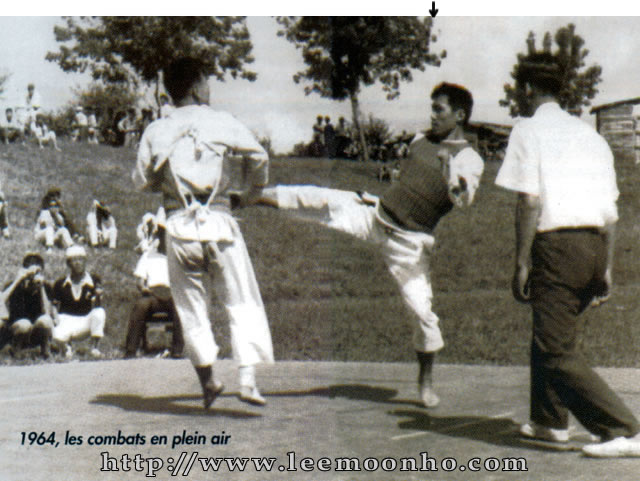
[/imageframe][/two_fifth]
[imageframe lightbox= »no » lightbox_image= » » style_type= »none » hover_type= »none » bordercolor= » » bordersize= »0px » borderradius= »0″ stylecolor= » » align= »none » link= » » linktarget= »_self » animation_type= »0″ animation_direction= »down » animation_speed= »0.1″ animation_offset= » » hide_on_mobile= »no » class= » » id= » »]
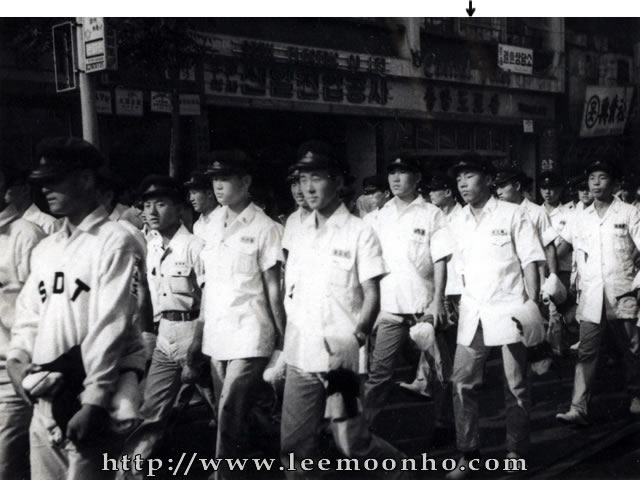
[/imageframe]
[imageframe lightbox= »no » lightbox_image= » » style_type= »none » hover_type= »none » bordercolor= » » bordersize= »0px » borderradius= »0″ stylecolor= » » align= »none » link= » » linktarget= »_self » animation_type= »0″ animation_direction= »down » animation_speed= »0.1″ animation_offset= » » hide_on_mobile= »no » class= » » id= » »]
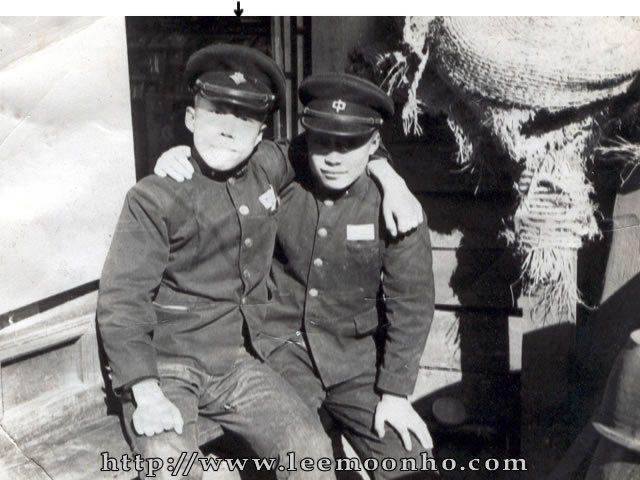
[/imageframe]
[imageframe lightbox= »no » lightbox_image= » » style_type= »none » hover_type= »none » bordercolor= » » bordersize= »0px » borderradius= »0″ stylecolor= » » align= »none » link= » » linktarget= »_self » animation_type= »0″ animation_direction= »down » animation_speed= »0.1″ animation_offset= » » hide_on_mobile= »no » class= » » id= » »]
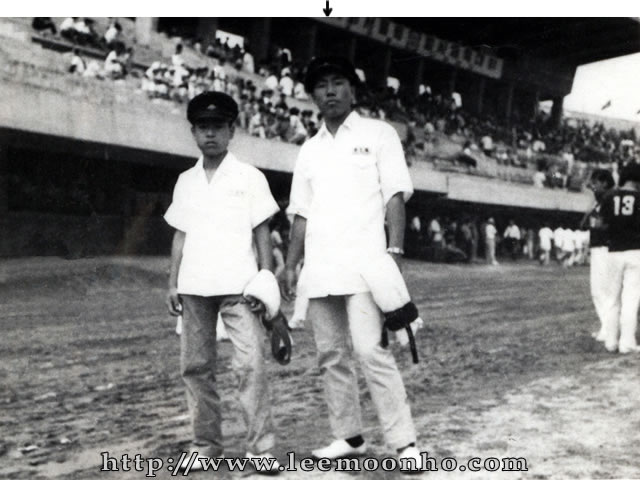
[/imageframe]
[fusion_text]C’est en 1961 que seront unifiées les différentes écoles (KWAN) et les différents styles, par la création de la K.T.A. ( Korean Tae Soo Do Association). Cette unification permettra d’établir des règles communes pour les combats et donnera naissance aux premières compétitions.[/fusion_text][fullwidth background_color= » » background_image= » » background_parallax= »none » enable_mobile= »no » parallax_speed= »0.3″ background_repeat= »no-repeat » background_position= »left top » video_url= » » video_aspect_ratio= »16:9″ video_webm= » » video_mp4= » » video_ogv= » » video_preview_image= » » overlay_color= » » overlay_opacity= »0.5″ video_mute= »yes » video_loop= »yes » fade= »no » border_size= »0px » border_color= » » border_style= » » padding_top= »0px » padding_bottom= »0px » padding_left= »0px » padding_right= »0px » hundred_percent= »no » equal_height_columns= »no » hide_on_mobile= »no » menu_anchor= » » class= » » id= » »][separator style_type= »none » top_margin= »10″ bottom_margin= »2″ sep_color= » » border_size= » » icon= » » icon_circle= » » icon_circle_color= » » width= » » alignment= » » class= » » id= » »][title size= »2″ content_align= »left » style_type= »single » sep_color= » » margin_top= » » margin_bottom= » » class= » » id= » »]Maître Lee Moon-Ho passe son 1er Dan en 1963, alors qu’il n’est encore qu’au lycée.[/title][fusion_text]A cette époque en Corée, il existe traditionnellement des Jeux Nationaux, épreuves organisées entre différentes villes. En Tae Kwon Do, les compétitions se déroulent par équipes de cinq combattants et toute la difficulté réside dans le fait que les combattants sont tirés au sort avant le combat, sans tenir compte de leur poids.
On commence aussi à utiliser des plastrons en bambous, ce qui change la façon de combattre et permet de mieux protéger les combattants car les combats sont très martiaux et très durs.[/fusion_text][/fullwidth]
[imageframe lightbox= »no » lightbox_image= » » style_type= »none » hover_type= »none » bordercolor= » » bordersize= »0px » borderradius= »0″ stylecolor= » » align= »none » link= » » linktarget= »_self » animation_type= »0″ animation_direction= »down » animation_speed= »0.1″ animation_offset= » » hide_on_mobile= »no » class= » » id= » »]
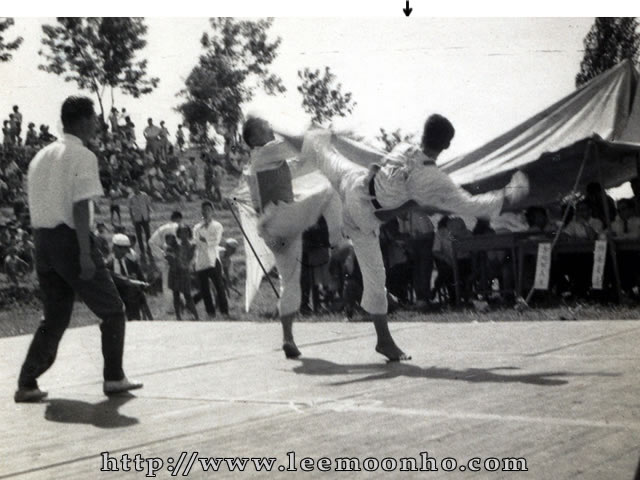
[/imageframe]
[fusion_text]C’est là que Maître Lee Moon-Ho fera ses premières compétitions et remportera ses premières victoires.
Son caractère le pousse à combattre différemment. Il intègre spontanément les steps, les esquives, les enchaînements.
Tout d’abord considéré avec étonnement par ses pairs, son style devient progressivement une référence et c’est cette façon de combattre qui est à l’origine du Taekwondo que nous pratiquons tous aujourd’hui, un Taekwondo tout en mobilité, vitesse et précision.
[/fusion_text]
[imageframe lightbox= »no » lightbox_image= » » style_type= »none » hover_type= »none » bordercolor= » » bordersize= »0px » borderradius= »0″ stylecolor= » » align= »none » link= » » linktarget= »_self » animation_type= »0″ animation_direction= »down » animation_speed= »0.1″ animation_offset= » » hide_on_mobile= »no » class= » » id= » »]
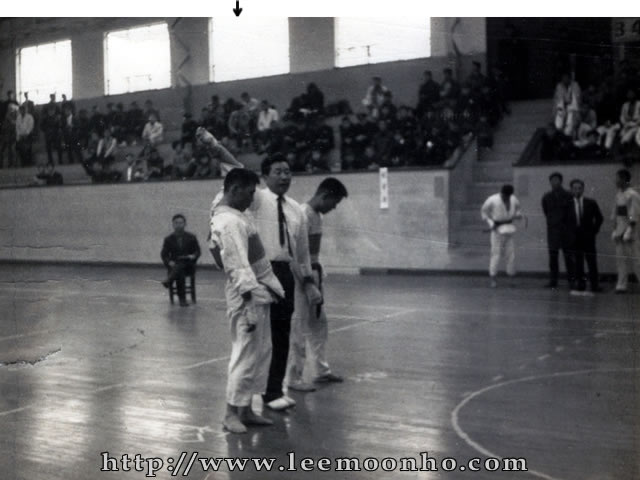
[/imageframe]
[fullwidth background_color= » » background_image= » » background_parallax= »none » enable_mobile= »no » parallax_speed= »0.3″ background_repeat= »no-repeat » background_position= »left top » video_url= » » video_aspect_ratio= »16:9″ video_webm= » » video_mp4= » » video_ogv= » » video_preview_image= » » overlay_color= » » overlay_opacity= »0.5″ video_mute= »yes » video_loop= »yes » fade= »no » border_size= »0px » border_color= » » border_style= » » padding_top= »0px » padding_bottom= »0px » padding_left= »0px » padding_right= »0px » hundred_percent= »no » equal_height_columns= »no » hide_on_mobile= »no » menu_anchor= » » class= » » id= » »][fusion_text]Il entre à l’université Sung Kyun Kwan de Séoul en 1964, recruté par le capitaine de l’équipe, CHUNG Suk-Jong, qui l’avait remarqué à différentes compétitions. Il suivra des cours d’anglais et continuera donc le Taekwondo au sein de l’équipe universitaire…[/fusion_text][/fullwidth][fullwidth background_color= » » background_image= » » background_parallax= »none » enable_mobile= »no » parallax_speed= »0.3″ background_repeat= »no-repeat » background_position= »left top » video_url= » » video_aspect_ratio= »16:9″ video_webm= » » video_mp4= » » video_ogv= » » video_preview_image= » » overlay_color= » » overlay_opacity= »0.5″ video_mute= »yes » video_loop= »yes » fade= »no » border_size= »0px » border_color= » » border_style= » » padding_top= »0px » padding_bottom= »0px » padding_left= »0px » padding_right= »0px » hundred_percent= »no » equal_height_columns= »no » hide_on_mobile= »no » menu_anchor= » » class= » » id= » »][title size= »2″ content_align= »left » style_type= »single » sep_color= » » margin_top= » » margin_bottom= » » class= » » id= » »]En 1966, il en devient le capitaine.[/title][fusion_text]Il accumule les victoires aussi bien dans les compétitions par équipes qu’en individuel. C’est dans ces occasions qu’il rencontrera le Général Choi Hong-Hi (Fondateur de l’I.T.F.). Il quitte l’université avec le grade de 3ème Dan.[/fusion_text][/fullwidth]
[imageframe lightbox= »no » lightbox_image= » » style_type= »none » hover_type= »none » bordercolor= » » bordersize= »0px » borderradius= »0″ stylecolor= » » align= »none » link= » » linktarget= »_self » animation_type= »0″ animation_direction= »down » animation_speed= »0.1″ animation_offset= » » hide_on_mobile= »no » class= » » id= » »]
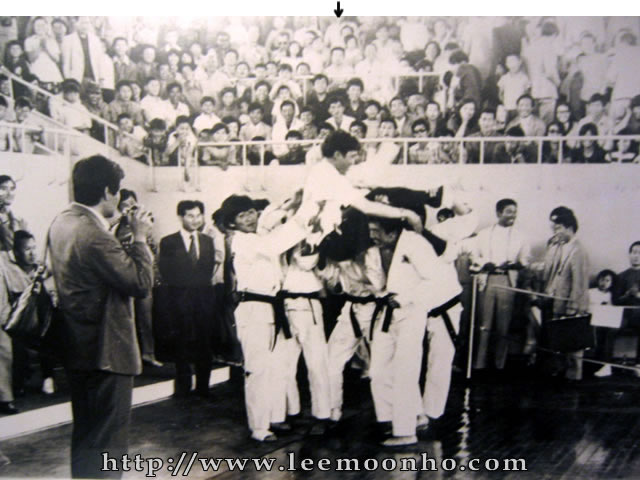
[/imageframe]
[imageframe lightbox= »no » lightbox_image= » » style_type= »none » hover_type= »none » bordercolor= » » bordersize= »0px » borderradius= »0″ stylecolor= » » align= »none » link= » » linktarget= »_self » animation_type= »0″ animation_direction= »down » animation_speed= »0.1″ animation_offset= » » hide_on_mobile= »no » class= » » id= » »]
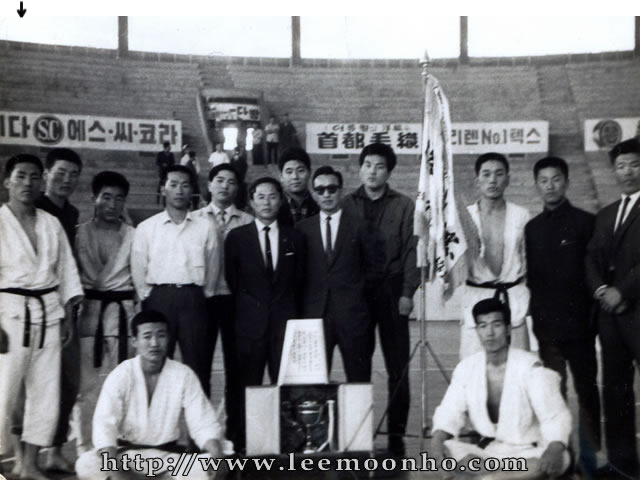
[/imageframe]
[imageframe lightbox= »no » lightbox_image= » » style_type= »none » hover_type= »none » bordercolor= » » bordersize= »0px » borderradius= »0″ stylecolor= » » align= »none » link= » » linktarget= »_self » animation_type= »0″ animation_direction= »down » animation_speed= »0.1″ animation_offset= » » hide_on_mobile= »no » class= » » id= » »]
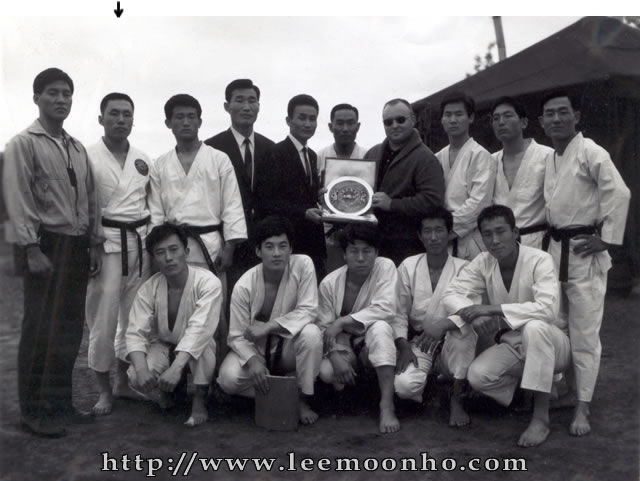
[/imageframe]
[imageframe lightbox= »no » lightbox_image= » » style_type= »none » hover_type= »none » bordercolor= » » bordersize= »0px » borderradius= »0″ stylecolor= » » align= »none » link= » » linktarget= »_self » animation_type= »0″ animation_direction= »down » animation_speed= »0.1″ animation_offset= » » hide_on_mobile= »no » class= » » id= » »]
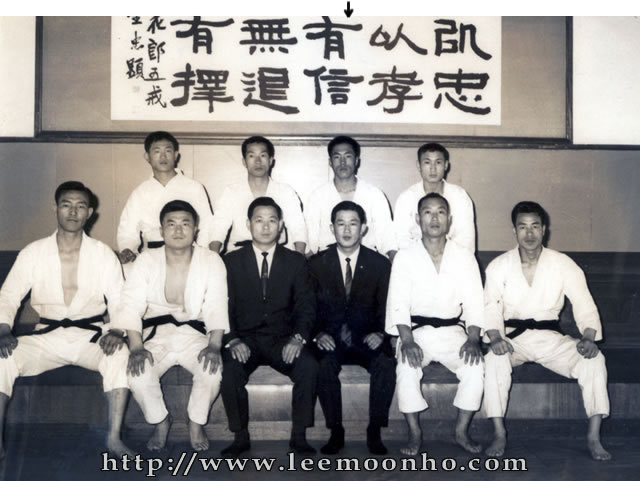
[/imageframe]
[fullwidth background_color= » » background_image= » » background_parallax= »none » enable_mobile= »no » parallax_speed= »0.3″ background_repeat= »no-repeat » background_position= »left top » video_url= » » video_aspect_ratio= »16:9″ video_webm= » » video_mp4= » » video_ogv= » » video_preview_image= » » overlay_color= » » overlay_opacity= »0.5″ video_mute= »yes » video_loop= »yes » fade= »no » border_size= »0px » border_color= » » border_style= » » padding_top= »0px » padding_bottom= »0px » padding_left= »0px » padding_right= »0px » hundred_percent= »no » equal_height_columns= »no » hide_on_mobile= »no » menu_anchor= » » class= » » id= » »][fusion_text]En 1967, et jusqu’en 1970, Maître Lee Moon-Ho assume ses obligations militaires au sein d’une base américaine à Séoul. Il enseignera le Taekwondo aux GI’s américains basés en Corée du Sud.
N’ayant pas le droit de sortir à sa guise pour se rendre dans un Dojang, sa passion pour le Tae Kwon Do le poussera à s’entraîner seul pendant les trois années de son service et lui permettra de se perfectionner.
Il fait sa dernière compétition (d’où il sort vainqueur…) en 1969, et présente son 4ème Dan à la fin de son service militaire.[/fusion_text][/fullwidth][fullwidth background_color= » » background_image= » » background_parallax= »none » enable_mobile= »no » parallax_speed= »0.3″ background_repeat= »no-repeat » background_position= »left top » video_url= » » video_aspect_ratio= »16:9″ video_webm= » » video_mp4= » » video_ogv= » » video_preview_image= » » overlay_color= » » overlay_opacity= »0.5″ video_mute= »yes » video_loop= »yes » fade= »no » border_size= »0px » border_color= » » border_style= » » padding_top= »0px » padding_bottom= »0px » padding_left= »0px » padding_right= »0px » hundred_percent= »no » equal_height_columns= »no » hide_on_mobile= »no » menu_anchor= » » class= » » id= » »][separator style_type= »none » top_margin= »10″ bottom_margin= »2″ sep_color= » » border_size= » » icon= » » icon_circle= » » icon_circle_color= » » width= » » alignment= » » class= » » id= » »][title size= »2″ content_align= »left » style_type= »single » sep_color= » » margin_top= » » margin_bottom= » » class= » » id= » »]Entre 1962 et 1969, il cumule DOUZE titres de champion en individuel lors de compétitions nationales.[/title][fusion_text]Véritable légende vivante du Taekwondo, il est considéré en Corée comme le créateur du combat moderne, tel qu’on le pratique aujourd’hui.
Maître Lee Moon-Ho donne ses premiers cours dans un Dojang de Séoul en 1971, pendant environ un an.[/fusion_text][/fullwidth][fullwidth background_color= » » background_image= » » background_parallax= »none » enable_mobile= »no » parallax_speed= »0.3″ background_repeat= »no-repeat » background_position= »left top » video_url= » » video_aspect_ratio= »16:9″ video_webm= » » video_mp4= » » video_ogv= » » video_preview_image= » » overlay_color= » » overlay_opacity= »0.5″ video_mute= »yes » video_loop= »yes » fade= »no » border_size= »0px » border_color= » » border_style= » » padding_top= »0px » padding_bottom= »0px » padding_left= »0px » padding_right= »0px » hundred_percent= »no » equal_height_columns= »no » hide_on_mobile= »no » menu_anchor= » » class= » » id= » »][separator style_type= »none » top_margin= »10″ bottom_margin= »2″ sep_color= » » border_size= » » icon= » » icon_circle= » » icon_circle_color= » » width= » » alignment= » » class= » » id= » »][title size= »2″ content_align= »left » style_type= »single » sep_color= » » margin_top= » » margin_bottom= » » class= » » id= » »]En 1972, il est choisi pour entraîner l’équipe de Séoul pour les 53ème Jeux Nationaux.[/title][/fullwidth][fullwidth background_color= » » background_image= » » background_parallax= »none » enable_mobile= »no » parallax_speed= »0.3″ background_repeat= »no-repeat » background_position= »left top » video_url= » » video_aspect_ratio= »16:9″ video_webm= » » video_mp4= » » video_ogv= » » video_preview_image= » » overlay_color= » » overlay_opacity= »0.5″ video_mute= »yes » video_loop= »yes » fade= »no » border_size= »0px » border_color= » » border_style= » » padding_top= »0px » padding_bottom= »0px » padding_left= »0px » padding_right= »0px » hundred_percent= »no » equal_height_columns= »no » hide_on_mobile= »no » menu_anchor= » » class= » » id= » »][title size= »2″ content_align= »left » style_type= »single » sep_color= » » margin_top= » » margin_bottom= » » class= » » id= » »]En 1973, pour les premiers championnats du monde de Taekwondo à Séoul, il entraîne l’équipe nationale de Corée du Sud et ils remportent ainsi leurs premiers titres mondiaux.[/title][fusion_text]Finalement, il enseigne le Taekwondo à la prestigieuse université coréenne, la « Séoul National University », de 1973 à 1977.[/fusion_text][/fullwidth]
[imageframe lightbox= »no » lightbox_image= » » style_type= »none » hover_type= »none » bordercolor= » » bordersize= »0px » borderradius= »0″ stylecolor= » » align= »none » link= » » linktarget= »_self » animation_type= »0″ animation_direction= »down » animation_speed= »0.1″ animation_offset= » » hide_on_mobile= »no » class= » » id= » »]
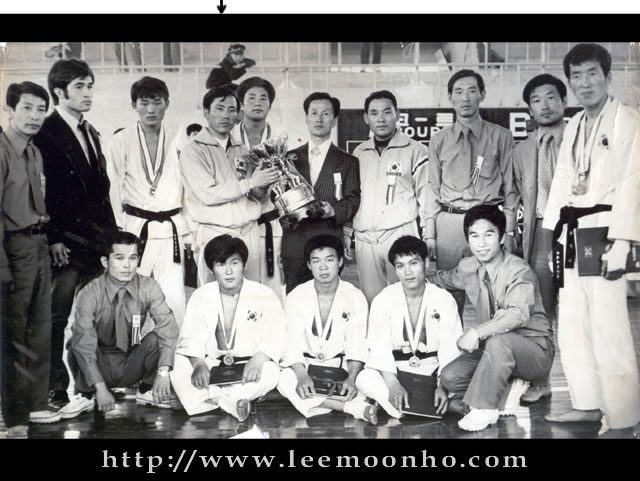
[/imageframe]
[imageframe lightbox= »no » lightbox_image= » » style_type= »none » hover_type= »none » bordercolor= » » bordersize= »0px » borderradius= »0″ stylecolor= » » align= »none » link= » » linktarget= »_self » animation_type= »0″ animation_direction= »down » animation_speed= »0.1″ animation_offset= » » hide_on_mobile= »no » class= » » id= » »]
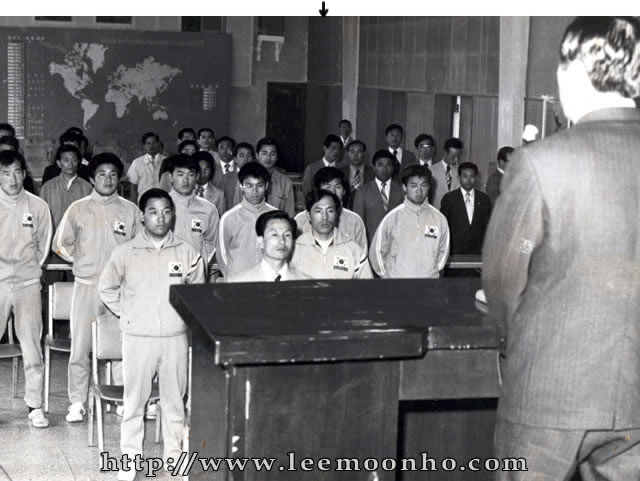
[/imageframe]
[imageframe lightbox= »no » lightbox_image= » » style_type= »none » hover_type= »none » bordercolor= » » bordersize= »0px » borderradius= »0″ stylecolor= » » align= »none » link= » » linktarget= »_self » animation_type= »0″ animation_direction= »down » animation_speed= »0.1″ animation_offset= » » hide_on_mobile= »no » class= » » id= » »]
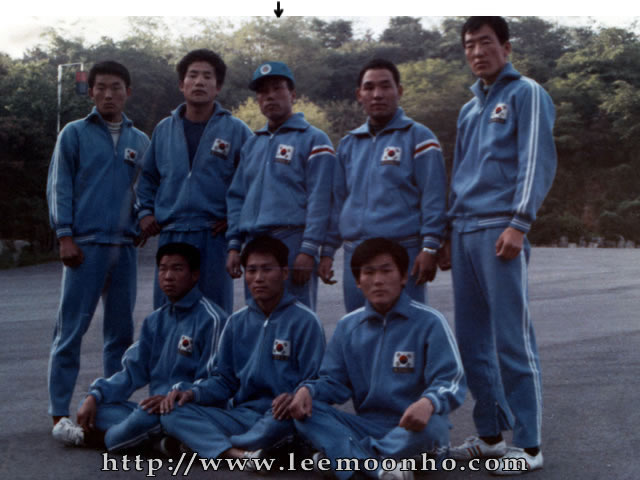
[/imageframe]
[imageframe lightbox= »no » lightbox_image= » » style_type= »none » hover_type= »none » bordercolor= » » bordersize= »0px » borderradius= »0″ stylecolor= » » align= »none » link= » » linktarget= »_self » animation_type= »0″ animation_direction= »down » animation_speed= »0.1″ animation_offset= » » hide_on_mobile= »no » class= » » id= » »]
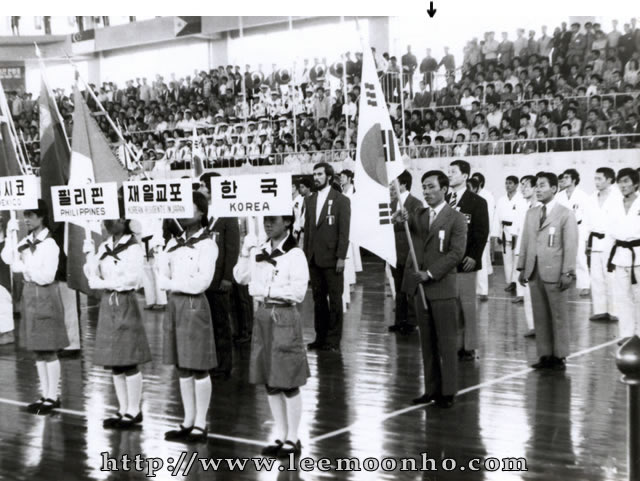
[/imageframe]
[imageframe lightbox= »no » lightbox_image= » » style_type= »none » hover_type= »none » bordercolor= » » bordersize= »0px » borderradius= »0″ stylecolor= » » align= »none » link= » » linktarget= »_self » animation_type= »0″ animation_direction= »down » animation_speed= »0.1″ animation_offset= » » hide_on_mobile= »no » class= » » id= » »]
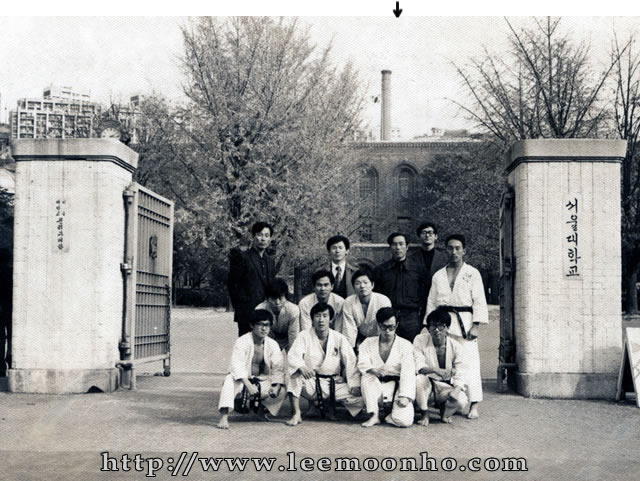
[/imageframe]
[imageframe lightbox= »no » lightbox_image= » » style_type= »none » hover_type= »none » bordercolor= » » bordersize= »0px » borderradius= »0″ stylecolor= » » align= »none » link= » » linktarget= »_self » animation_type= »0″ animation_direction= »down » animation_speed= »0.1″ animation_offset= » » hide_on_mobile= »no » class= » » id= » »]
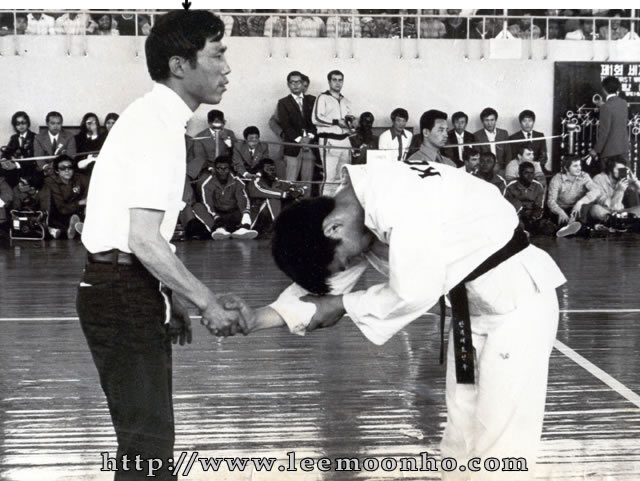
[/imageframe]
[fullwidth background_color= » » background_image= » » background_parallax= »none » enable_mobile= »no » parallax_speed= »0.3″ background_repeat= »no-repeat » background_position= »left top » video_url= » » video_aspect_ratio= »16:9″ video_webm= » » video_mp4= » » video_ogv= » » video_preview_image= » » overlay_color= » » overlay_opacity= »0.5″ video_mute= »yes » video_loop= »yes » fade= »no » border_size= »0px » border_color= » » border_style= » » padding_top= »0px » padding_bottom= »0px » padding_left= »0px » padding_right= »0px » hundred_percent= »no » equal_height_columns= »no » hide_on_mobile= »no » menu_anchor= » » class= » » id= » »][separator style_type= »none » top_margin= »10″ bottom_margin= »2″ sep_color= » » border_size= » » icon= » » icon_circle= » » icon_circle_color= » » width= » » alignment= » » class= » » id= » »][fusion_text]Mais, depuis longtemps déjà, Maître Lee Moon-Ho envisage de quitter la Corée.
Il le fera le 26 mars 1977 pour venir vivre en France, à Nantes. Il commence à donner des stages, au niveau national et régional, dès son arrivée.
[/fusion_text][/fullwidth]
[imageframe lightbox= »no » lightbox_image= » » style_type= »none » hover_type= »none » bordercolor= » » bordersize= »0px » borderradius= »0″ stylecolor= » » align= »none » link= » » linktarget= »_self » animation_type= »0″ animation_direction= »down » animation_speed= »0.1″ animation_offset= » » hide_on_mobile= »no » class= » » id= » »]
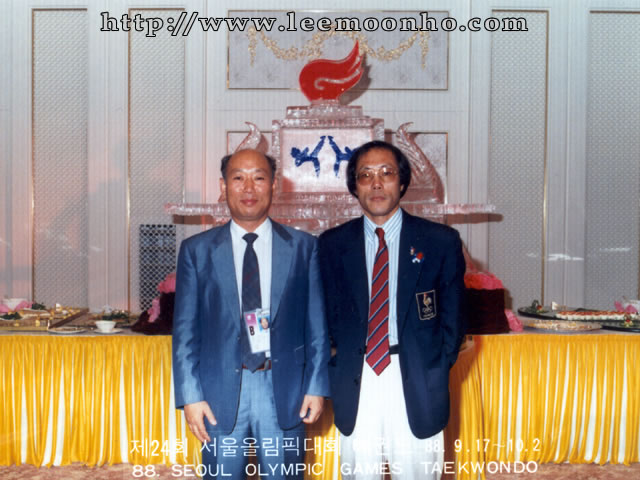
[/imageframe]
[fullwidth background_color= » » background_image= » » background_parallax= »none » enable_mobile= »no » parallax_speed= »0.3″ background_repeat= »no-repeat » background_position= »left top » video_url= » » video_aspect_ratio= »16:9″ video_webm= » » video_mp4= » » video_ogv= » » video_preview_image= » » overlay_color= » » overlay_opacity= »0.5″ video_mute= »yes » video_loop= »yes » fade= »no » border_size= »0px » border_color= » » border_style= » » padding_top= »0px » padding_bottom= »0px » padding_left= »0px » padding_right= »0px » hundred_percent= »no » equal_height_columns= »no » hide_on_mobile= »no » menu_anchor= » » class= » » id= » »][separator style_type= »none » top_margin= »10″ bottom_margin= »2″ sep_color= » » border_size= » » icon= » » icon_circle= » » icon_circle_color= » » width= » » alignment= » » class= » » id= » »][title size= »2″ content_align= »left » style_type= »single » sep_color= » » margin_top= » » margin_bottom= » » class= » » id= » »]Il établit son propre Dojang à Nantes, et fonde d’autres clubs, notamment à Cholet et à Niort, qui, plus tard, seront repris par ses élèves devenus enseignants à leur tour.[/title][fusion_text]Véritable légende vivante du Taekwondo, il est considéré en Corée comme le créateur du combat moderne, tel qu’on le pratique aujourd’hui.
Maître Lee Moon-Ho donne ses premiers cours dans un Dojang de Séoul en 1971, pendant environ un an.[/fusion_text][/fullwidth]
[imageframe lightbox= »no » lightbox_image= » » style_type= »none » hover_type= »none » bordercolor= » » bordersize= »0px » borderradius= »0″ stylecolor= » » align= »none » link= » » linktarget= »_self » animation_type= »0″ animation_direction= »down » animation_speed= »0.1″ animation_offset= » » hide_on_mobile= »no » class= » » id= » »]
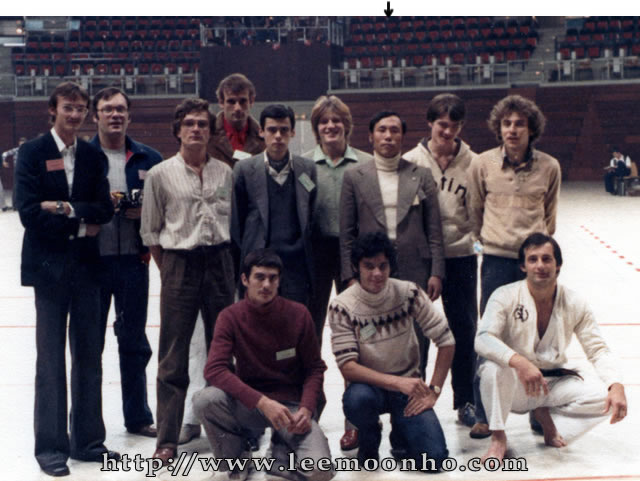
[/imageframe]
[imageframe lightbox= »no » lightbox_image= » » style_type= »none » hover_type= »none » bordercolor= » » bordersize= »0px » borderradius= »0″ stylecolor= » » align= »none » link= » » linktarget= »_self » animation_type= »0″ animation_direction= »down » animation_speed= »0.1″ animation_offset= » » hide_on_mobile= »no » class= » » id= » »]

[/imageframe]
[imageframe lightbox= »no » lightbox_image= » » style_type= »none » hover_type= »none » bordercolor= » » bordersize= »0px » borderradius= »0″ stylecolor= » » align= »none » link= » » linktarget= »_self » animation_type= »0″ animation_direction= »down » animation_speed= »0.1″ animation_offset= » » hide_on_mobile= »no » class= » » id= » »]
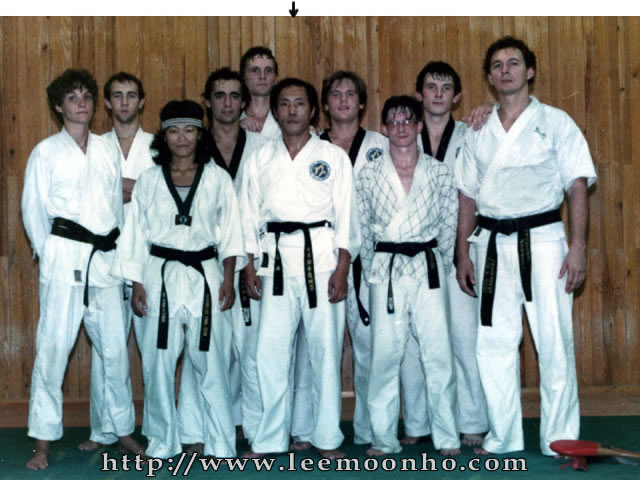
[/imageframe]
[imageframe lightbox= »no » lightbox_image= » » style_type= »none » hover_type= »none » bordercolor= » » bordersize= »0px » borderradius= »0″ stylecolor= » » align= »none » link= » » linktarget= »_self » animation_type= »0″ animation_direction= »down » animation_speed= »0.1″ animation_offset= » » hide_on_mobile= »no » class= » » id= » »]
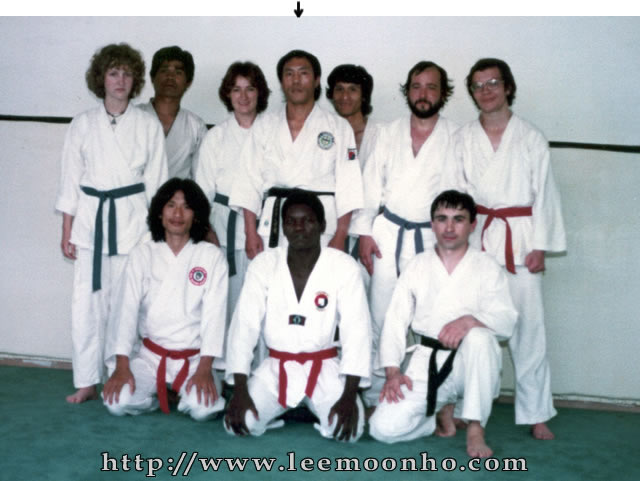
[/imageframe]
[fullwidth background_color= » » background_image= » » background_parallax= »none » enable_mobile= »no » parallax_speed= »0.3″ background_repeat= »no-repeat » background_position= »left top » video_url= » » video_aspect_ratio= »16:9″ video_webm= » » video_mp4= » » video_ogv= » » video_preview_image= » » overlay_color= » » overlay_opacity= »0.5″ video_mute= »yes » video_loop= »yes » fade= »no » border_size= »0px » border_color= » » border_style= » » padding_top= »0px » padding_bottom= »0px » padding_left= »0px » padding_right= »0px » hundred_percent= »no » equal_height_columns= »no » hide_on_mobile= »no » menu_anchor= » » class= » » id= » »][separator style_type= »none » top_margin= »10″ bottom_margin= »2″ sep_color= » » border_size= » » icon= » » icon_circle= » » icon_circle_color= » » width= » » alignment= » » class= » » id= » »][title size= »2″ content_align= »left » style_type= »single » sep_color= » » margin_top= » » margin_bottom= » » class= » » id= » »]Trois ans plus tard, en 1980, le poste d’entraîneur de l’équipe de France lui est attribué.[/title][fusion_text]
Il assurera cette fonction jusqu’en 1988 aux Jeux Olympiques de Séoul. Trente ans se sont écoulés depuis qu’il a commence le Tae Kwon Do…
Maître Lee Moon-Ho, de retour dans le même stade, devenu entre-temps le gymnase CHANG CHUNG, se tient au côté de l’équipe de France sélectionnée pour les Jeux Olympiques.
Il en est l’entraîneur national …
[/fusion_text][/fullwidth]
[imageframe lightbox= »no » lightbox_image= » » style_type= »none » hover_type= »none » bordercolor= » » bordersize= »0px » borderradius= »0″ stylecolor= » » align= »none » link= » » linktarget= »_self » animation_type= »0″ animation_direction= »down » animation_speed= »0.1″ animation_offset= » » hide_on_mobile= »no » class= » » id= » »]
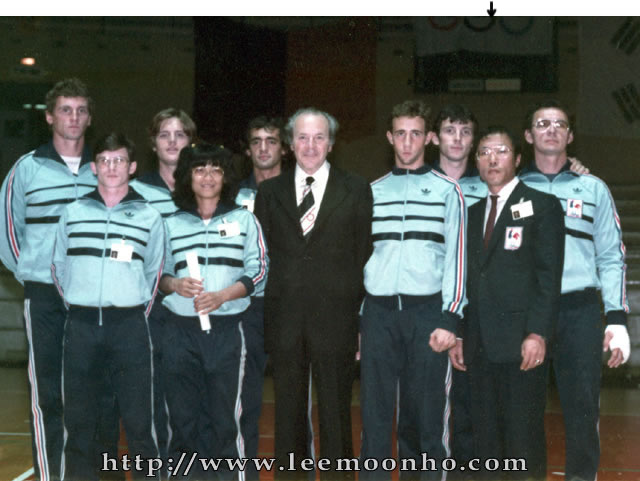
[/imageframe]
[imageframe lightbox= »no » lightbox_image= » » style_type= »none » hover_type= »none » bordercolor= » » bordersize= »0px » borderradius= »0″ stylecolor= » » align= »none » link= » » linktarget= »_self » animation_type= »0″ animation_direction= »down » animation_speed= »0.1″ animation_offset= » » hide_on_mobile= »no » class= » » id= » »]
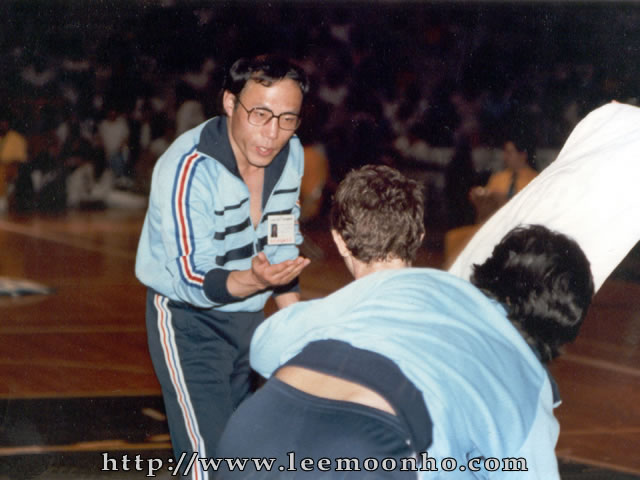
[/imageframe]
[imageframe lightbox= »no » lightbox_image= » » style_type= »none » hover_type= »none » bordercolor= » » bordersize= »0px » borderradius= »0″ stylecolor= » » align= »none » link= » » linktarget= »_self » animation_type= »0″ animation_direction= »down » animation_speed= »0.1″ animation_offset= » » hide_on_mobile= »no » class= » » id= » »]
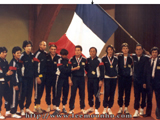
[/imageframe]
[imageframe lightbox= »no » lightbox_image= » » style_type= »none » hover_type= »none » bordercolor= » » bordersize= »0px » borderradius= »0″ stylecolor= » » align= »none » link= » » linktarget= »_self » animation_type= »0″ animation_direction= »down » animation_speed= »0.1″ animation_offset= » » hide_on_mobile= »no » class= » » id= » »]
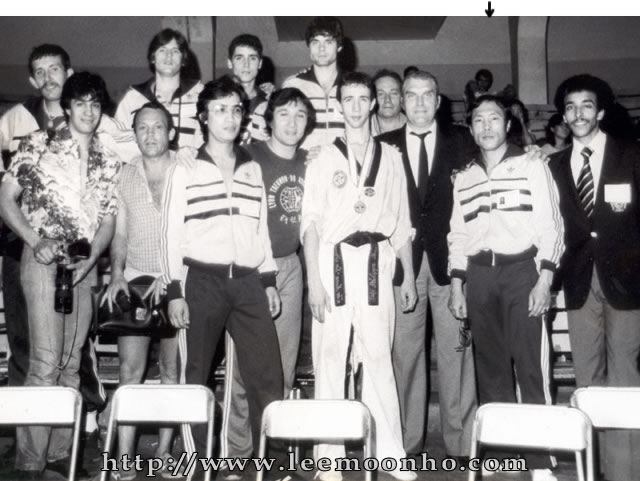
[/imageframe]
[fullwidth background_color= » » background_image= » » background_parallax= »none » enable_mobile= »no » parallax_speed= »0.3″ background_repeat= »no-repeat » background_position= »left top » video_url= » » video_aspect_ratio= »16:9″ video_webm= » » video_mp4= » » video_ogv= » » video_preview_image= » » overlay_color= » » overlay_opacity= »0.5″ video_mute= »yes » video_loop= »yes » fade= »no » border_size= »0px » border_color= » » border_style= » » padding_top= »0px » padding_bottom= »0px » padding_left= »0px » padding_right= »0px » hundred_percent= »no » equal_height_columns= »no » hide_on_mobile= »no » menu_anchor= » » class= » » id= » »][separator style_type= »none » top_margin= »10″ bottom_margin= »2″ sep_color= » » border_size= » » icon= » » icon_circle= » » icon_circle_color= » » width= » » alignment= » » class= » » id= » »][title size= »2″ content_align= »left » style_type= »single » sep_color= » » margin_top= » » margin_bottom= » » class= » » id= » »]Le Taekwondo français lui doit ses premiers titres en Championnat d’Europe avec, entre autres :[/title][fusion_text]
Angel Bonadeï, médaille de bronze à Rome en 1982 et à Stuttgart en 1984.
Brigitte Evanno, médaille de bronze à Stuttgart en 1984 et médaille d’or à Seefeld en 1986 (également championne de France de 1981 à 1986).
Franck Cribaillet, médaille d’or à Seefeld en 1986, (et plusieurs fois champion de France entre 1980 et 1986).[/fusion_text][/fullwidth]
[imageframe lightbox= »no » lightbox_image= » » style_type= »none » hover_type= »none » bordercolor= » » bordersize= »0px » borderradius= »0″ stylecolor= » » align= »none » link= » » linktarget= »_self » animation_type= »0″ animation_direction= »down » animation_speed= »0.1″ animation_offset= » » hide_on_mobile= »no » class= » » id= » »]
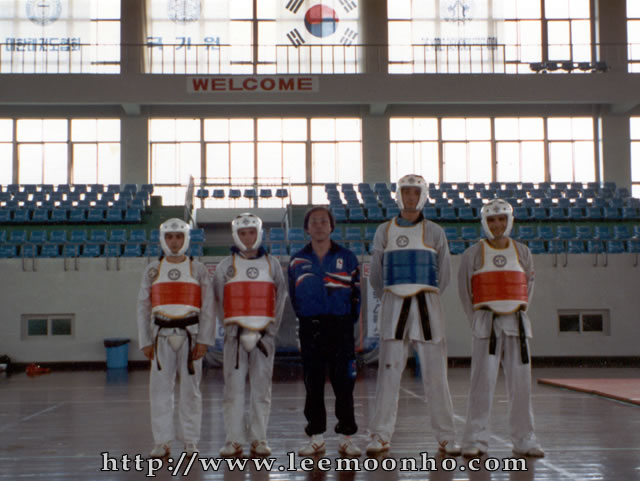
[/imageframe]
[imageframe lightbox= »no » lightbox_image= » » style_type= »none » hover_type= »none » bordercolor= » » bordersize= »0px » borderradius= »0″ stylecolor= » » align= »none » link= » » linktarget= »_self » animation_type= »0″ animation_direction= »down » animation_speed= »0.1″ animation_offset= » » hide_on_mobile= »no » class= » » id= » »]
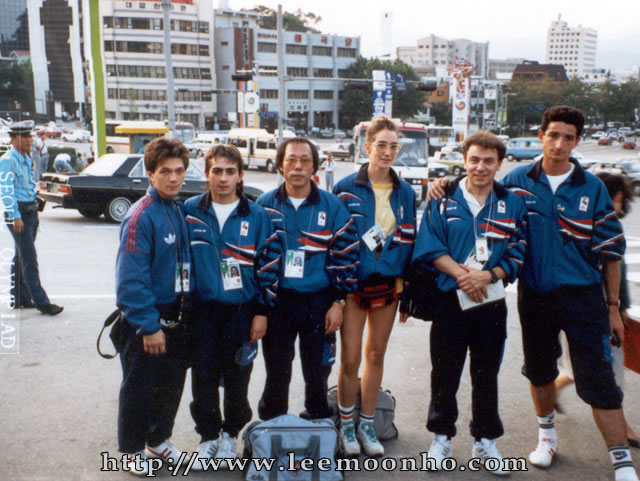
[/imageframe]
[imageframe lightbox= »no » lightbox_image= » » style_type= »none » hover_type= »none » bordercolor= » » bordersize= »0px » borderradius= »0″ stylecolor= » » align= »none » link= » » linktarget= »_self » animation_type= »0″ animation_direction= »down » animation_speed= »0.1″ animation_offset= » » hide_on_mobile= »no » class= » » id= » »]
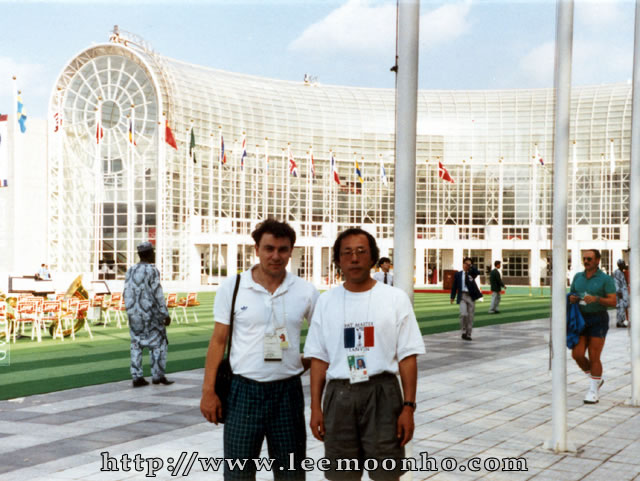
[/imageframe]
[fullwidth background_color= » » background_image= » » background_parallax= »none » enable_mobile= »no » parallax_speed= »0.3″ background_repeat= »no-repeat » background_position= »left top » video_url= » » video_aspect_ratio= »16:9″ video_webm= » » video_mp4= » » video_ogv= » » video_preview_image= » » overlay_color= » » overlay_opacity= »0.5″ video_mute= »yes » video_loop= »yes » fade= »no » border_size= »0px » border_color= » » border_style= » » padding_top= »0px » padding_bottom= »0px » padding_left= »0px » padding_right= »0px » hundred_percent= »no » equal_height_columns= »no » hide_on_mobile= »no » menu_anchor= » » class= » » id= » »][separator style_type= »none » top_margin= »10″ bottom_margin= »2″ sep_color= » » border_size= » » icon= » » icon_circle= » » icon_circle_color= » » width= » » alignment= » » class= » » id= » »][title size= »2″ content_align= »left » style_type= »single » sep_color= » » margin_top= » » margin_bottom= » » class= » » id= » »]Maître Lee Moon-Ho emmènera quatre fois les équipes de France aux Championnats du Monde et plusieurs combattants seront récompensés :[/title][fusion_text]
En 1982 à Guayaquil, où Philippe Bouëdo (futur D.T.N.) obtiendra la médaille de bronze et fera ainsi gagner à la France sa première médaille en Championnat du Monde.
Michel Della Negra, aujourd’hui entraineur national, médaille de bronze à Copenhague en 1983.
Mounir Boukrouh, médaille de bronze à Barcelone en 1987.
Brigitte Evanno, médaille de bronze à Barcelone en 1987.
Il retournera enfin là d’où il était parti enfant, en accompagnant la première équipe olympique française de Taekwondo aux Jeux Olympiques de Séoul en 1988.
[/fusion_text][/fullwidth]
[imageframe lightbox= »no » lightbox_image= » » style_type= »none » hover_type= »none » bordercolor= » » bordersize= »0px » borderradius= »0″ stylecolor= » » align= »none » link= » » linktarget= »_self » animation_type= »0″ animation_direction= »down » animation_speed= »0.1″ animation_offset= » » hide_on_mobile= »no » class= » » id= » »]
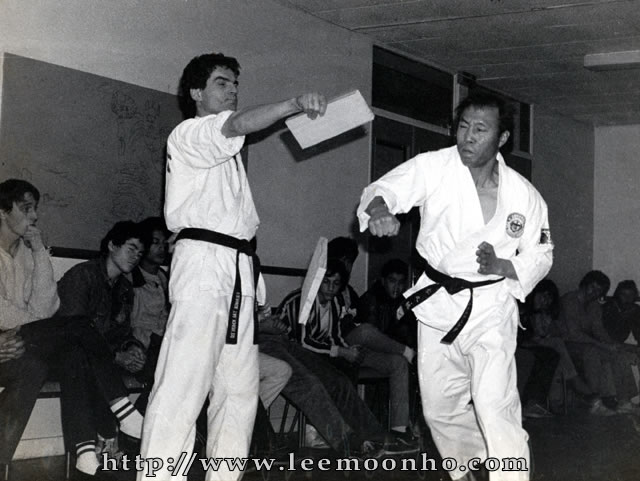
[/imageframe]
[imageframe lightbox= »no » lightbox_image= » » style_type= »none » hover_type= »none » bordercolor= » » bordersize= »0px » borderradius= »0″ stylecolor= » » align= »none » link= » » linktarget= »_self » animation_type= »0″ animation_direction= »down » animation_speed= »0.1″ animation_offset= » » hide_on_mobile= »no » class= » » id= » »]
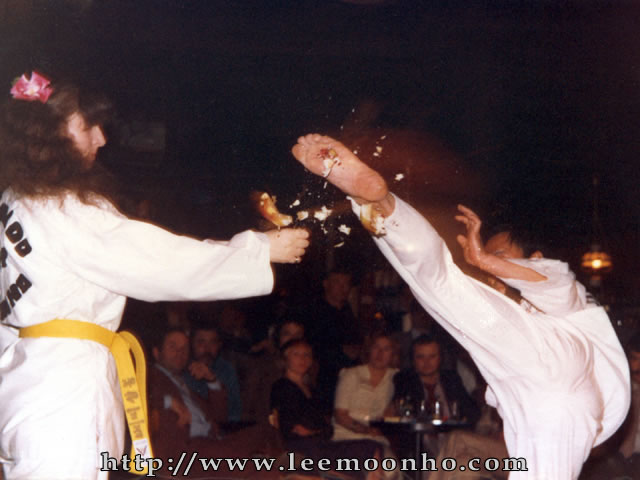
[/imageframe]
[imageframe lightbox= »no » lightbox_image= » » style_type= »none » hover_type= »none » bordercolor= » » bordersize= »0px » borderradius= »0″ stylecolor= » » align= »none » link= » » linktarget= »_self » animation_type= »0″ animation_direction= »down » animation_speed= »0.1″ animation_offset= » » hide_on_mobile= »no » class= » » id= » »]
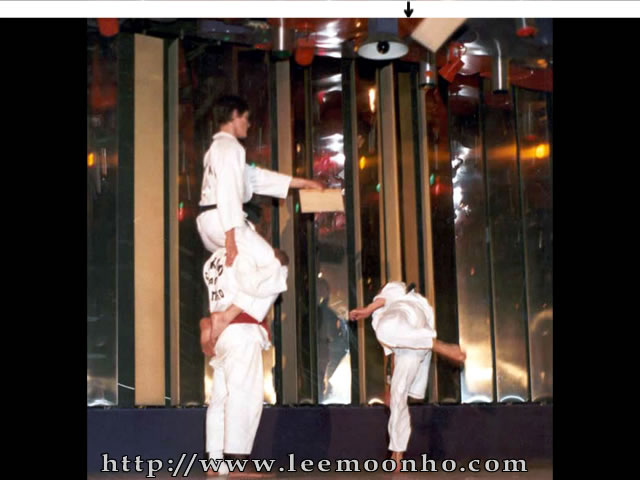
[/imageframe]
[fullwidth background_color= » » background_image= » » background_parallax= »none » enable_mobile= »no » parallax_speed= »0.3″ background_repeat= »no-repeat » background_position= »left top » video_url= » » video_aspect_ratio= »16:9″ video_webm= » » video_mp4= » » video_ogv= » » video_preview_image= » » overlay_color= » » overlay_opacity= »0.5″ video_mute= »yes » video_loop= »yes » fade= »no » border_size= »0px » border_color= » » border_style= » » padding_top= »0px » padding_bottom= »0px » padding_left= »0px » padding_right= »0px » hundred_percent= »no » equal_height_columns= »no » hide_on_mobile= »no » menu_anchor= » » class= » » id= » »][separator style_type= »none » top_margin= »10″ bottom_margin= »2″ sep_color= » » border_size= » » icon= » » icon_circle= » » icon_circle_color= » » width= » » alignment= » » class= » » id= » »][title size= »2″ content_align= »left » style_type= »single » sep_color= » » margin_top= » » margin_bottom= » » class= » » id= » »]Parallèlement à ses activités au sein de l’équipe de France, Maître Lee Moon-Ho continue à enseigner dans la région des Pays de la Loire.
[/title][fusion_text]Il donne également des stages dans toute la France. Et il fera aussi de nombreuses démonstrations afin de contribuer à la promotion du Tae Kwon Do en France.[/fusion_text][/fullwidth]
 [/imageframe]
[/imageframe] [/imageframe][/two_fifth]
[/imageframe][/two_fifth] [/imageframe]
[/imageframe] [/imageframe]
[/imageframe] [/imageframe]
[/imageframe] [/imageframe]
[/imageframe] [/imageframe]
[/imageframe] [/imageframe]
[/imageframe] [/imageframe]
[/imageframe] [/imageframe]
[/imageframe] [/imageframe]
[/imageframe] [/imageframe]
[/imageframe] [/imageframe]
[/imageframe] [/imageframe]
[/imageframe] [/imageframe]
[/imageframe] [/imageframe]
[/imageframe] [/imageframe]
[/imageframe] [/imageframe]
[/imageframe] [/imageframe]
[/imageframe] [/imageframe]
[/imageframe] [/imageframe]
[/imageframe] [/imageframe]
[/imageframe] [/imageframe]
[/imageframe] [/imageframe]
[/imageframe] [/imageframe]
[/imageframe] [/imageframe]
[/imageframe] [/imageframe]
[/imageframe] [/imageframe]
[/imageframe] [/imageframe]
[/imageframe] [/imageframe]
[/imageframe] [/imageframe]
[/imageframe] [/imageframe]
[/imageframe]